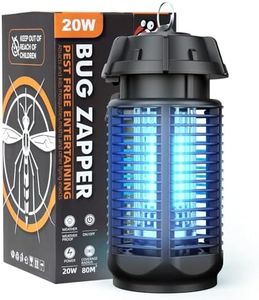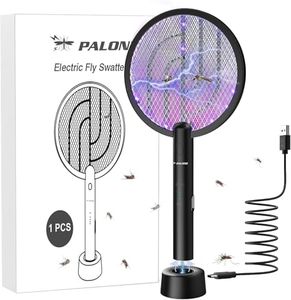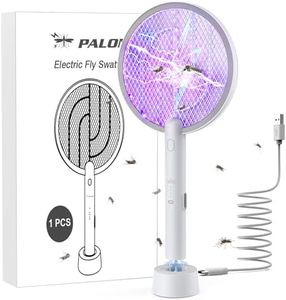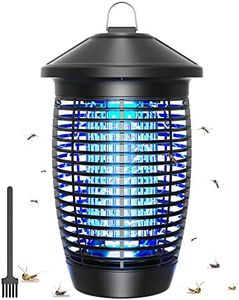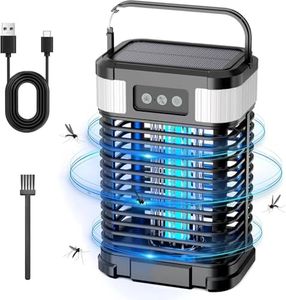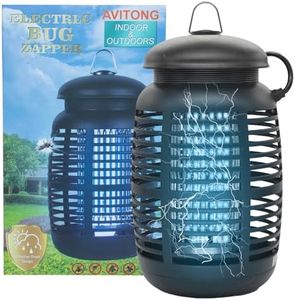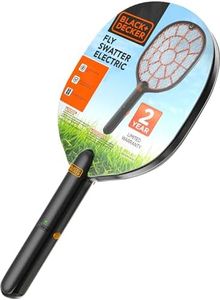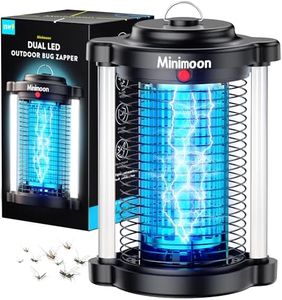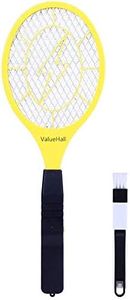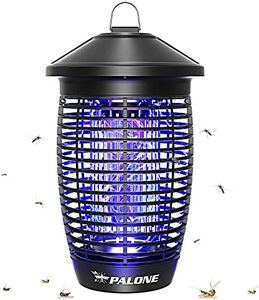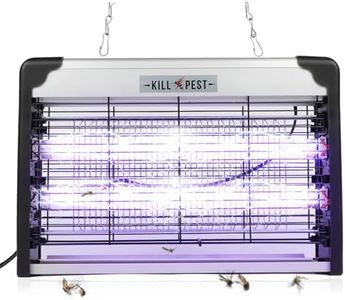We Use CookiesWe use cookies to enhance the security, performance,
functionality and for analytical and promotional activities. By continuing to browse this site you
are agreeing to our privacy policy
10 Best Bug Zappers
From leading brands and best sellers available on the web.Buying Guide for the Best Bug Zappers
Choosing the right bug zapper can make your time outdoors, or even indoors, more comfortable by reducing the number of pesky insects around you. To find the best fit, it's important to know where and how you'll use the device, what types of bugs you want to target, and any specific needs like safety or installation preferences. Understanding the main features will help you pick a zapper that works effectively for your situation and keeps unwanted insects at bay.Coverage AreaCoverage area tells you the maximum space a bug zapper can protect from insects. This spec is important because it determines how effective the device will be in your environment. Coverage areas range from small (a few dozen square feet) to large (over an acre). For smaller balconies or rooms, a compact zapper with limited coverage will suffice, while for large patios or gardens, opt for a model designed to cover several hundred or thousand square feet. Consider how much space you want to protect and pick accordingly to avoid over- or underpowering your needs.
Power SourceBug zappers can be powered in different ways—mainly by electricity (plug-in), batteries, or solar panels. This matters because it impacts where and how you can use the device. Plug-in models require an outlet and suit stationary, larger areas. Battery-powered options offer portability and flexibility but need regular recharging or changing of batteries. Solar-powered zappers are eco-friendly and work best outdoors with ample sunlight. Think about where you plan to use your zapper most often and select a power source that supports your lifestyle.
Type of AttractionBug zappers attract insects using UV light, heat, or sometimes scented attractants. This spec is important because different attractants work better for different insect types. UV light is effective for many bugs, especially moths and flies, while scented attractants may work better for mosquitoes. If you’re targeting a specific insect (like mosquitoes), look for a zapper using the right method. Think about the type of bugs you're struggling with and choose a device optimized to attract those pests.
Safety FeaturesSafety features include protective grilles, childproof designs, or weather-resistant casings. They matter because bug zappers can pose risks to curious pets or kids and need protection from the elements if used outside. Light-duty, indoor models might focus more on physical barriers, while outdoor models may also have waterproofing. Consider who will be around the device (children and pets) and where it�’ll be placed when deciding how much emphasis to put on these features.
Ease of CleaningBug zappers collect the dead insects inside a tray or have a grid that needs cleaning. This aspect is important because easy cleaning ensures the zapper stays effective and hygienic. Some have removable trays for quick disposal, while others may require more effort. If you prefer low-maintenance options or will use the zapper frequently, pick a design that makes cleaning simple and quick.
Noise LevelWhen a bug gets zapped, some devices make more noise than others. This can be an important factor if you're sensitive to sudden sounds or want a quiet environment, such as a bedroom or reading nook. Some zappers advertise a 'silent operation,' while others may produce noticeable crackling sounds. Think about where you’ll use the zapper and whether noise will matter, and choose accordingly.
